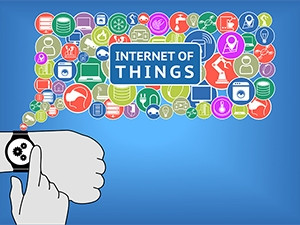
By 2020, retailers seeking to capitalise on the Internet of things (IOT) will spend about $2.5 billion on IOT-related technologies such as Bluetooth-equipped beacons and radio frequency ID (RFID) tags.
This is according to Juniper Research's recent study, which notes the amount is four times more than the $670 million expected to be spent this year.
IDC says SA spent $27.9 million on retail IOT last year, and this number is expected to grow to $36.3 million this year and be as much as $60 million by 2018.
Juniper Research says leading retailers using the IOT to generate an 'ecosystem' are poised to gain market advantage and truly capitalise on the opportunity.
As much as 70% of purchased IOT hardware won't be consumer-centric by 2020, with the segment driven by business IOT spending pushing the IOT opportunity worldwide to $300 billion, the research firm notes.
Steffen Sorrell, senior analyst at Juniper Research, says retailers such as Zara and Target are already taking advantage of the benefits offered by RFID asset tracking.
"The beacon industry is expanding rapidly - if used as a method to provide consumers with contextually relevant information in conjunction with their smartphone or wearable technology, it will enormously enhance the in-store experience."
Linking the hardware elements of RFID tags, beacons and connected consumer electronics, such as wearables, with software analytics promises in-depth business insight and an enhanced customer experience, says Juniper Research.
Sorrell says the backbone of the IOT is essentially the analytics behind the connected devices and to maximise its potential, interoperability is required so that devices can communicate, share and understand information between one another.
However, in the current landscape, this presents an enormous challenge; especially in the machine-to-machine sector where the market is very fragmented.
According to the research firm, with the number of connected units within the IOT forecast to reach 38.5 billion in 2020, attitudes and methods with regards to cyber security will have to undergo fundamental change.
Where today's security is principally focused on access prevention, the IOT security model will require robust means of identifying inevitable network breaches.
Sorrell says the best approach to security will require detection of breaches, and the ability to prevent their spread rather than simply trying to keep all attackers out.
Share